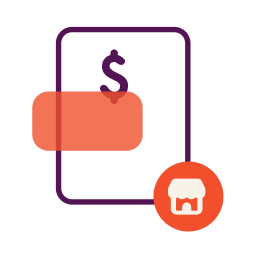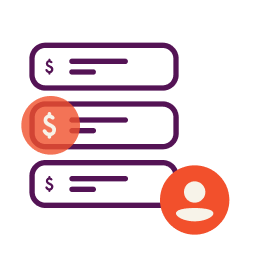A merchant cash advance (MCA) is a type of business financing that offers small business owners an advance against future sales. Instead of collecting from customers as sales are made, the business gets a lump sum that will be paid back out of future sales. Typically, the MCA provider will take a fixed amount or a percentage of credit or debit card sales directly from the businesses’ merchant account, along with a fee called a “factor rate.”
MCA’s are often easy to qualify for when a business has strong revenues, and offer very fast funding, especially when compared to traditional small business loans like bank loans, including SBA loans. But they can also be expensive and risky, so it’s important to know the pros and cons of this type of financing.
Here we’ll talk about what to look out for in an MCA to help you make a better decision about this type of financing.
State of the Merchant Cash Advance Industry
The cash advance industry includes very large, well-known companies like PayPal and Shopify, as well as smaller merchant cash advance companies the average business owner has never heard of before they are pitched financing.
There is a lot of money to be made and regulators have taken action against some allegedly predatory players in the space. For example, the FTC filed complaints against multiple merchant cash advance providers in 2020 for various practices, including allegedly continuing to take money from businesses’ accounts even after their debt was repaid, and for allegedly misleading claims that, for example, made it sound like business owners weren’t personally responsible for the debt when they were.
How Do Merchant Cash Advances Work?
Applying for and obtaining a merchant cash advance is generally a fast process. The business provides background information, including information about sales, usually debit and credit card transactions, from merchant processing accounts. The approval process usually focuses on business revenues, especially those in the last 3—6 months.
If approved, the business will be given a lump sum, usually as an advance against future credit card sales. It is often possible to receive the advance amount within a day or two of applying.
Instead of monthly payments that are typical with traditional business loans, the advance is usually paid via withdrawals from the businesses’ payment processing account. Daily payments (every business day) are typical.
An MCA can offer business funding ranging from a few thousand dollars to more than six figures. Again, the amount of the advance will typically be based on recent sales. While some providers will check credit, credit history is not usually a major factor as it is with conventional loans. In other words, bad credit may be OK with some providers.
The Pros and Cons of Merchant Cash Advances
Pros
- Minimal paperwork/application process
- Funding is often fast if approved
- Payments may fluctuate based on sales
- May have flexible credit requirements
Cons
- Can be expensive compared to small business financing
- Repaying faster typically does not save money
- Can be hard to compare costs
- Daily or weekly payments can affect cash flow
How To Get a Merchant Cash Advance
Again, the application process is typically fairly easy and quick. Though no MCA application is exactly the same, there are a few documents that are typically required to prove your identity and that of your business. They include:
- Proof of identity such as government-issued ID
- Business type
- Business bank account statements
- Credit card processing statements
Read more about merchant cash advance underwriting here.
Merchant Cash Advance Alternatives
If you decide an MCA isn’t right for your business, or if you think you may be able to qualify for a lending product with better terms, there are other financing options worth considering, from short term loans to business credit cards.
Other types of business financing to consider include:
Business line of credit
Popular for working capital, a line of credit gives the borrower access to a credit line they can borrow from as needed. As funds are repaid, they become available again to borrow. These are available from online lenders as banks.
Business credit cards
While business credit card are popular for rewards and other perks, most also offer a line of credit that can be used for short-term financing. While interest rates are usually in the double digits, credit cards 0% intro APRs allow business owners to borrow for several months (or even a year or longer) interest-free, provided the balance is repaid before the intro rate expires.
Many business credit cards do not require minimum business revenue, but good personal credit scores are often required. And many small business credit cards can help your business build good business credit scores.
Invoice factoring or financing
Invoice factoring or financing may help businesses that invoice other businesses (B2B) get paid faster. The business sells or or assigns invoices to the factoring company at a discounted rate in exchange for cash now. Similar to MCA’s, the business that factors invoices may not need good credit.
The Actual Cost of Merchant Cash Advances
When calculating the price for an MCA, keep in mind that the cost associated with the advance is not typically expressed as interest rate or annual percentage rate (APR). Instead, it’s often expressed as a factor rate. This is sometimes confusing, because it’s different from what business owners typically see a typical loan or credit card.
When converted to an APR, a number like 1.2 can actually translate to a much higher equivalent APR, depending on how long it takes to pay it back.
Here’s how to calculate your real cost of borrowing:
Total Repayment Amount = Total Advance x Factor Rate
- Total advance = $20,000
- Factor rate = 1.25
- Total fees (cost to borrow) = $5,000
- Total repayment amount = $25,000
In the above example, a $20,000 MCA at a factor rate of 1.25 gives a total payback amount of $25,000. The total cost would be $5,000.
Calculating MCA repayment: Percent of credit or debit card sales
To calculate MCA repayment for terms that require a percentage of credit or debit card sales, let’s start by revisiting the example in the previous example.
Total Repayment Amount = Total Advance x Factor Rate
- Total advance = $20,000
- Factor rate = 1.25
- Total fees (cost to borrow) = $5,000
- Total amount to be repaid = $25,000
To calculate how much each installment will cost, use the following formula:
Installment Amount = Percent of Sales x Monthly Sales / Payment Frequency (daily or monthly)
Next, you’ll calculate how long it will take to pay back the full amount:
Time to Pay Back MCA = Total Repayment Amount / Installment Amount
When you put it all together, you get:
- Total advance = $20,000
- Factor rate = 1.25
- Total fees (cost to borrow) = $5,000
- Total repayment amount = $25,000
- Monthly credit card sales = $100,000
- % of sales (according to terms) = 10%
- Payment frequency = Daily
- Payment amount (daily) = $333.33
- Time to pay back = 75 days (2.5 months)*
*75 days is starred here because credit and debit card sales usually fluctuate. The more sales your business makes, the faster the advance gets repaid. The less sales you make, the longer it will take. Your installment amount will vary a lot with your sales, which often impacts cash flow.
Nav’s Verdict: Merchant Cash Advances for Small Business
MCAs exist for a reason: they offer fast funding to businesses that may not otherwise be able to get the funding they need.
Business owners may find cheaper alternatives to MCA’s, so it’s worth exploring various types of financing, such as short term lines of credit. The best time to research financing options is before you need the money urgently. That gives you more time to consider different options.
That said, sometimes an MCA is all a business can qualify for, or offers quick access to cash that other funding options can’t provide. If you decide an MCA is right for your business, here are some quick tips:
- Understand the cost. This MCA calculator can help you translate the factor rate to an equivalent APR.
- Carefully review the repayment terms. Understand how they will affect cash flow.
- Read reviews and proceed with caution.
MCAs can help small businesses stay afloat during tough times. But it’s important to really understand what you’re getting. Being informed and financially savvy when borrowing is always a good idea, no matter what kind of financing product you’re applying for.
Nav can help your business compare financing options from multiple providers, and build business credit to help your business qualify for a wider range of financing options.
FAQs Merchant Cash Advance
What is the difference between a loan and a merchant cash advance?
There are many different types of small business loans, so it’s not always easy to compare each one to an MCA. But generally key differences include:
Repayment: Loans often have fixed payments, while MCA payments may vary with sales.
Cost structure: Loans use interest rates, MCAs use factor rates.
Qualification: Loans often require good personal and/or business credit; MCAs focus on sales volume for qualifying purposes.
Term length: Some business loans offer repayment periods of 5-10 years or more; MCAs are usually short-term funding.
Loans often cost less overall but some can be harder to qualify for, while MCAs provide quick cash but at a higher cost.
Do you have to pay back a merchant cash advance?
Yes, MCAs must be repaid or the business will default. Some MCAs require a personal guaranty that extends to the business owner borrower.
Can a merchant cash advance hurt your credit?
Most MCA providers use a soft credit pull during underwriting, which does not affect the business owner’s personal credit. Most MCAs don’t report regularly to business credit, though they can if they choose to do so. There are other ways an MCA can affect your business credit, even if it’s not regularly reported to business credit.
- The MCA provider may file a UCC filing which can appear on credit reports. Some lenders avoid lending to businesses with multiple UCC filings.
- If the business defaults on the MCA, it could result in a lawsuit or judgment reported to credit bureaus
- If the business runs into serious financial problems it may have to file bankruptcy, which affects business credit.
This article was originally written on August 30, 2024.




Have at it! We'd love to hear from you and encourage a lively discussion among our users. Please help us keep our site clean and protect yourself. Refrain from posting overtly promotional content, and avoid disclosing personal information such as bank account or phone numbers.
Reviews Disclosure: The responses below are not provided or commissioned by the credit card, financing and service companies that appear on this site. Responses have not been reviewed, approved or otherwise endorsed by the credit card, financing and service companies and it is not their responsibility to ensure all posts and/or questions are answered.